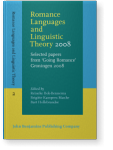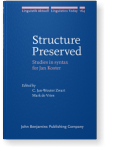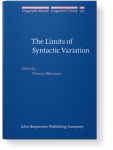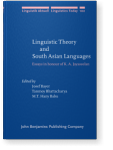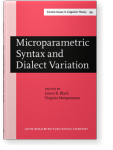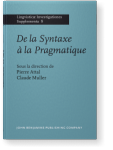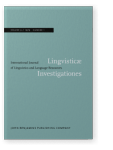Richard S. Kayne
List of John Benjamins publications for which Richard S. Kayne plays a role.
2018 Chapter 9. Clitic doubling, person and agreement in French hyper-complex inversion Romance Languages and Linguistic Theory 14: Selected papers from the 46th Linguistic Symposium on Romance Languages (LSRL), Stony Brook, NY, Repetti, Lori and Francisco Ordóñez (eds.), pp. 153–184 | Chapter
The paper claims that Hyper-Complex Inversion (HCI) is an instance of clitic doubling that is subject to a person restriction not found with more familiar cases of clitic doubling. This restriction is argued to result from an incompatibility between the postverbal subject clitic (SCL) of HCI and… read more
2010 Toward a syntactic reinterpretation of Harris & Halle (2005) Romance Languages and Linguistic Theory 2008: Selected papers from 'Going Romance' Groningen 2008, Bok-Bennema, Reineke, Brigitte Kampers-Manhe and Bart Hollebrandse (eds.), pp. 145–170 | Article
Harris & Halle (2005) present a carefully worked out analysis of certain nonstandard Spanish phenomena involving pronominal clitics and the verbal plural morpheme -n. At issue are plural imperatives in combination with one or more object clitics. In this paper, I suggest that Harris & Halle’s… read more
2010 Notes on French and English demonstratives Structure Preserved: Studies in syntax for Jan Koster, Zwart, Jan-Wouter and Mark de Vries (eds.), pp. 215–228 | Article
2008 Expletives, datives, and the tension between morphology and syntax The Limits of Syntactic Variation, Biberauer, Theresa (ed.), pp. 175–217 | Article
Expletive there and its closest counterparts in other languages are not expletives in Chomsky’s sense (merged directly into a sentential Spec position). They are instead instances of deictic elements originating within their associate (in a way that has something in common with Moro 1997 and, more… read more
2008 Antisymmetry and the lexicon Linguistic Variation Yearbook 2008, van Craenenbroeck, Jeroen (ed.), pp. 1–32 | Article
2007 On the Syntax of Quantity in English Linguistic Theory and South Asian Languages: Essays in honour of K. A. Jayaseelan, Bayer, Josef, Tanmoy Bhattacharya and M.T. Hany Babu (eds.), pp. 73–105 | Article
Many and few are adjectival modifiers of an unpronounced noun NUMBER and the same holds for much and little as modifiers of AMOUNT. This reflects a broader property of UG, namely that UG excludes the possibility that a single adjective could simultaneously express what is expressed by large/small… read more
2004 Here and There Lexique, Syntaxe et Lexique-Grammaire / Syntax, Lexis & Lexicon-Grammar: Papers in honour of Maurice Gross, Leclère, Christian, Éric Laporte, Mireille Piot and Max Silberztein (eds.), pp. 253–273 | Article
Locative 'here' and 'there' are parallel to 'this here place' and 'that there place' (which contain demonstrative 'here' and 'there') except that locative 'here' and 'there' have (in the spirit of Katz and Postal (1964)) an unpronounced counterpart of 'place', and an unpronounced determiner instead… read more
1996 Microparametric syntax: Some introductory remarks Microparametric Syntax and Dialect Variation, Black, James R. and Virginia Motapanyane (eds.), pp. ix–xviii | Article
1984 Catégories vides en français De la Syntaxe à la Pragmatique: Actes du Colloque de Rennes, Université de Haute-Bretagne, Attal, Pierre et Claude Muller (dir.), pp. 261–284 | Article
1979 Extensions Du Liage Et Du Marquage Du Cas Lingvisticæ Investigationes 3:1, pp. 29–55 | Article

